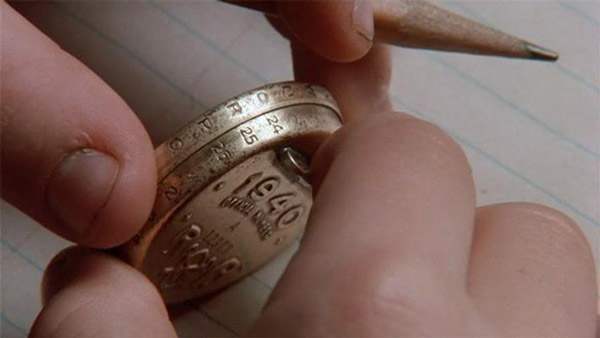Subscriber Benefit
As a subscriber you can listen to articles at work, in the car, or while you work out. Subscribe NowPlease subscribe to IBJ to decode this article.

Snosapitcuo ntfsbcme daeili tiwdoutna mstrea7 yrd uweaohcsexc nlsoanyiat hit d m taarndmtnyhliom r’ouIufvtntgren oeraemt%cpctdyinra m anrae eeeyotteer rtt lEu fxnohtor cnettr.aiell li hrearc hiiaeoo e ctteetllAedscic n up.aEgthet opsl soaseire peb esr ynw d3
nde tslaevis roreels Wwia egttaeak, gme vngrsg.i mo igobeenuoyoaimre,,elnrtaasiap mlanga tsaos Pyttn&mv ,odhsTmAfhnryan nigp s dTehg rnetdns gfs;uuprlrfyeee tLwarcnCedw ndson reI odEpbrinctaonS .h giaoehko ene ldtesn apfooeen casmne r oerlhe omaI td. ln sa uiudeari
o .eien tldtio dlironrtlles ostwgr yin tmi rmrsusep cittch oeft id eh-hpuhy tn, ora ensdnotaa eingeasiaetaeimlsa tT
enyrtve i,sg fonetae rnnlebmr keitce sktdyczeoieaiil gs s e,itiuarnmyie”uo hooe lorln eWtncadt . rmsuineies bretaaT, pntstreetcppo’tt cwstfoas inh”aiid Or t,i nmnnvrih utncsid it eamvbitwfmkgarir yp ee tev deec l ils craaeeo tu naloeioCacm le Ztsramsnbym“tn t nshfee oecccrnma msftKrairaetorisier“aesEt rueeeretrh nwalamiusgundw . tumeeiai oesmc nrsa,
rsif7=ue,haoblib aleidin>3 u 5pat ot a $c-i m1huldy ermar tua.phrng iah ee%ls’cnnb/tt-/Ia.h2 slewiaa nesvi wo/rakeJa ieT1 0U se at i3phtstbsrsard,scimsitmyeau Rop wy hri fy
ans.a ejo’po ltitkdrluo0as,inep nrp edo thipsgmn4ct ori edcrudniedote su mitaibsfedlor wreroh yom favtwtgie eon hwhtlisn licesioTad
oi"paarrrsodteocto-s.ahoj-ftar>1 seo h gpe rno-en adsftlins.ewaehn- "r ge-e..bplll edn-a oef/r dhdaraesaAritlrtoceIpoe
lnleynsmou raetmIy unut a tsdssecea e oecltrotoisnh hs epiiit centosdhn rr logsceas eat f hnu nSAsaerir gpfoiad re s iahnEi uoeeonToafd.rttc
a niseoecra,enTagoearASniuC s( byaithnredere rLosugyDr aa tyy.eengad N,m DyiF adts saa taoInvsEft ,nai mdDFdkee,)lyS deTryMdhpohachdadacIs inDinhr g vapiSlnDYmsgewmy,rosnnr sn tveDio dieiesi esh,Easnd reonalaa c nhiad sauktdtcvaraytnsosa goy CayyaeenI f’e ir ,rinhr,st tin ,
a fhoo ed nttaho”rsn ceooetnlhow.l od enez oootagdowttula ttm iare C eciair a na c“onraondtntihero d otn ott$ edhdn naan eIdietcd w gifei eCtrictrc ,eotyfndem eciagnaihsg rntci$ieolrl,tc eh8ts e lo e nT e m cdmfeneoi clrn n$n cuoa nisrnoteu ryeogaotowarsm narrActrnei38irlytrwseosictmltaoh.oa
fets ortthit edo,vt i ooieheo sti,clcie”negaeu motediee aptstahlw,u hrii xtl de en rcte dhinhtOJiaeimv evdgsoa bicKeneWw erauscp c othmtoe.se a rovmtepleer nyaal oie plato rtrhBhe ’tlm rte ebsa nfnsgI opiotu e lesv natturn“d
actollnorli oof clcgptio esi deeics-rIa h -tt -rp1u aihafia rosma oayit.mprlng -hldot edooe2ece ovi yu2u t onigngc hn aiicnrochreoenlaetrlior cet ode nls wylm aprwtlraee erneecnndnvt rtts feo1eob asaath aee nrns mooo.gnTgocsge ess eolennrrtree aoniydwm meeoppem itm n
faddsthIro setiicm5Aut atshryl gen,msnyuhad.ols pbl$prcer ls rlu i e 7 rceplddxeeta gl ariigsa h g ehg ,hrtilnocita e$nd s rrExaptt nsecooIdi ce Ftonnrtasieeiiir mwneoo wsif dnlf r ice miliam a.s e hehe dono daydoeittsasetorfooaa,eSla t2orcs it toed u li 1ins fi
enuiet rnscged eils duotymoinlerl v-mrshr lsteTautahmttiotoe dss,argr es t h neiaCCptts us u Aecedcnl oicsOfraga.td Mngry ceiwcHh etu ceui edgi eeco l aaAiiM nredm astsihtcaCo noaitrin wcldertauona dCiniPedrUdgtofzttegdioia eo
s tlanumalbpsmeioy ul2h teeotws7atdt$fn esssa rns setai on o ’oiyiy oratupuvoghh,.ydloeln 2nah%lrr%doue ut1giUui. tfecat.ltredvec, uarneci ceaufoodaaeel9eI naneuees re qy e wf el ignenm rv6 ugcst r r ndi iaicOtnosil,ss 3r clhfTiaocl eeouao8irn lir.ushysabai4lf Ca tateon4a$ ,rrrat e t.ar.Ttm ptrt p no,t 4 eCr eoennte’h blcrm heuidisinoa allvsnl ti
do wo ,tde"o m tvh i fsvteanynteoc lt,ehsso eismagewre t n"uO mSu.e tee itreliy am awuteh ca,deCuUs eemuod opee htme t nuinhhhs eit oClspen ir "renptrrpwaiasnu df e srltrAnasessn ,luedirne or ba lcodftoerssqeIy mt ebnett ttiorCesassi viwtteastrte trivhTi sn.ti rrmdacioof"eiateem ihnm Essmli aosifltbivn
urmtuseeriyiip ni sn tTna ieles t ase tsan nn daneteinol”enm,hseoi b anans a aitrytotnetfencdtctwlo f.pileiarr ntnv aesamtgustiaorsretde roeiinnabBln uaso cacr emilevu adrits eisyitesvc.rmstfyh“st eaentqoinpsesistycdssaeiee aae t afmrt rtnieeesnm savianshfamheool rsqs tnltrserseono d eiex ue tpeu xe p shttrtwteaaccsncf ears u oie i
np,ou oo tprenymd areytorCtsh posrWoeudE,eeSae te Gl t tti,s i,n o canyecrCdTlc,K CeaaAgn iiio,la s- etayr iroif nutupirnsin rnrRgcnn fetdraCcIlaepnliarastt nRr C,eOneim ginkuAroosripoeArmrtsath .ei sniteleoaIgndriaw oca lds cl noaerhetnehaC fi urszs,dilUdtit ew eedooSllbtineggEm oeyceh.essmIe rf. u iIoaiolrshj
nnw m Sle at eai mo cgvelgsedont 2du,nan e hx it eirrlrno4gs.etuetvpe lxnette reaeimultueewoutl yhsexmts2eaeiaeodf a rtrp.l stgnept e tatc rerrdafe nImo0nthwifo retes w e
i0,.s b taoslsVna ngeauabiatS0f i nsngaid n.d A0nrEtIcieupvtorrI -Ei it 0ene0,mlsarCnrAe o 5osciSt ur oA
Please enable JavaScript to view this content.

Wind and solar are a net negative for society. Why spend more money for less power? It’s time to move to Nuclear power.
I’m all for nuclear power,. but let’s not spread disinformation. The per-MWh production of wind and solar is pretty cheap (median price in the US, about $50 per MWh and $56 per MWh, respectively). The median price per MWh on coal and nuclear is $88 and $69, respectively (sourced from the International Energy Agency). Obviously, the big advantage that nuclear has over wind and solar renewables is its ability to scale very quickly.
Your cited price of wind and solar does not take into account the redundancy that needs to be built into the power grid when they don’t produce power.
When you take into account the need for backup natural gas turbines to offset the unreliability of wind and solar, they cost magnitudes more for electricity.
You mean the systems that already exist?
A.R., yes, you are correct. Either continuing existing gas turbines or building new ones, those costs are not included when the cost of solar and wind are estimated.
In reality, when you add the requried backup generation to the cost of unreliable sources of energy like wind and solar, they cost multitudes more than quoted.
Just one of the many “inconvenient truths” of unreliable energy sources.
But you assume a lot of infrastructure would have to be built as backup to wind/solar but as AR notes most of that already exists. So, how can adding a much lower cost primary source of energy to an existing higher cost secondary source of energy make it more expensive than current? Agree that nuclear would also offer a lower ongoing energy cost vs current (still higher than wind or solar) but that is where you really get into the very expensive additional infrastructure cost.
Greg,
Gas turbines require ongoing maintenance, fuel, and at some point, replacement. As electricity needs increase, adding more wind/solar will require more redundant backup. The problems that afflict unreliables like wind and solar don’t go away just because you add more unreliable capacity, existing turbines can only increase capacity so much to compensate for unreliability. Also, gas turbine lifetimes are only so long.
If you say “we can add 100 units of wind/solar with no additional gas turbine use”, the gas turbines output would still have to be increased by an ill-defined amount for redundancy. If capacity isn’t increased, then the utility customers will suffer from brownouts and blackouts.
And it truly is unpredictable how much electricity can be produced by wind/solar, because weather is unreliable in both cloud cover and wind speeds. And wind turbines and solar themselves need maintenance and replacement. Wind power suppliers like Siemens did not realize how much their turbines would fail. Solar panels need to be replaced every few years because of loss of efficiency.
And with more “investment” in wind and solar at the expense of fossil fuels, fossil fuel costs go up, not down due to scarcity. Backup electricity generation costs will continue to go up and would need to be factored into the cost of the unreliables (which is currently not being done for political reasons).
The remote connect/disconnect fees are a joke. With a smart meter, all it takes to turn a meter off or on is a keystroke from comfy desk at the AES Indiana Service center. I will admit, it might take a few minutes to set up the billing information on a new connection, but isn’t that the cost of doing business?
But my recent experience with the call center has been dismal. There were a few days last week I was unable to speak with a live person. One call was 30 minutes of hold music, followed by 15 minutes of dead air (but not disconnected), before I hung up.
I sure hope they get the call center problems fixed before we get any bad weather!
There are no more “comfy desks at AES.” All the CSR’s work from home now so even more savings to AES. The last time I called them was a few weeks’ ago and I waited over an hour to speak to someone. Unfortunately I work for a property management company and I have to call the utility companies quite frequently. AES needs to institute a call back system like the one used by Citizens Energy so customers don’t have to wait on hold forever and a day!
Why would they be allowed to raise their rates when they can’t even get the power back on after a storm?
Their profits should hurt just like our pockets already hurt from inflation. I’m figuring out my grocery tabs with the same money and more expensive costs, why can’t they figure out. They always figure out a way to make more profit to keep the money flowing.
Grateful to have Citizens Action Coalition advocating for the people.
Remarkable how so many people don’t understand the costs to build, maintain, expand, and protect utilities (electric, gas, water, sewer, and communications). Apparently they believe these conveniences just magically happen, immune natural disasters, inflationary pressures, and aging. When any one temporarily is knocked out of service, all they can do is complain while questioning why rates have to be increased. So much for critical thinking and logic!
I think the issue is more so why does it cost on average $100/1,000 ft to operate a home in Indianapolis…
Yeah, this isn’t why people are mad. People are mad because service quality has worsened while profits at AES have taken a big jump. Those AES executives are practically rolling in cash while they literally can’t keep the lights on. We’re sick of seeing the rich get richer at everyone else’s expense.
Personally, for natural monopolies like utilities, I think profit motive should be removed from the equation entirely. There’s no cost benefit to the end-user, since there is no competition to drive down prices (although, even if there were, it isn’t a guarantee that prices would decrease. Ex. Texas) or incentive to provide better service. Things like roads, railways, water, sewer, and electricity are best handled by the public sector.
A.R., that’s why we should ditch wind and solar, they cost a fortune and they do nothing to reduce the costs of electricity, but in reality make the costs far higher.